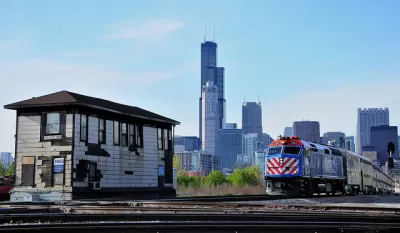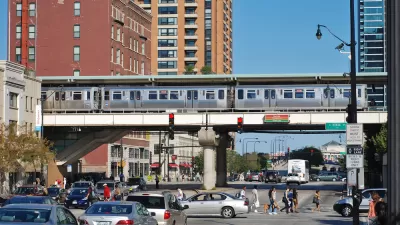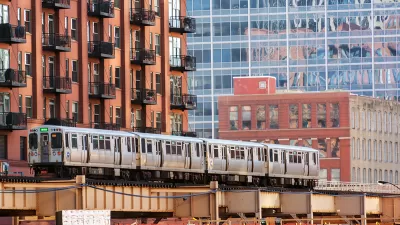On Chicago's massive south side, fixing transit means working on more than just CTA trains.

Chicago's North Side is denser and more prosperous than its South Side. Serving the South Side’s population is more difficult than serving the North Side, not only because its equally-sized population is more diffused, but also because those who live in the area are more likely to be children or elderly than are their counterparts on the North Side, so their transit needs are less likely to be for commutes to the center city to work. That population is more likely to be in school or retired.
"Faced with this set of challenges, advocates and policymakers theoretically have two basic options: Encourage more housing, shops, and jobs near existing transit; and expand the rapid transit network," Daniel Key Hertz argues in a piece for South Side Weekly. Toward the goal of improving transit for the South Side, Kay Hertz recommends waking a "sleeping giant" by leveraging the full potential of the Metra: by connecting its payment system to the CTA's, by making its trips more frequent and by modernizing the city's buses, which have an outsized effect on South Side Chicagoans. "Send a train down the Metra tracks every ten to fifteen minutes and install turnstiles that take Ventra (or give conductors handheld readers), and you’ve effectively created a new “L” line without laying a single foot of new track," Kay Hertz argues.
This work would go a long way toward addressing the persistent inequities in the Midwest's biggest city.
FULL STORY: Beyond the ‘L’

Alabama: Trump Terminates Settlements for Black Communities Harmed By Raw Sewage
Trump deemed the landmark civil rights agreement “illegal DEI and environmental justice policy.”

Planetizen Federal Action Tracker
A weekly monitor of how Trump’s orders and actions are impacting planners and planning in America.

The 120 Year Old Tiny Home Villages That Sheltered San Francisco’s Earthquake Refugees
More than a century ago, San Francisco mobilized to house thousands of residents displaced by the 1906 earthquake. Could their strategy offer a model for the present?

In Both Crashes and Crime, Public Transportation is Far Safer than Driving
Contrary to popular assumptions, public transportation has far lower crash and crime rates than automobile travel. For safer communities, improve and encourage transit travel.

Report: Zoning Reforms Should Complement Nashville’s Ambitious Transit Plan
Without reform, restrictive zoning codes will limit the impact of the city’s planned transit expansion and could exclude some of the residents who depend on transit the most.

Judge Orders Release of Frozen IRA, IIJA Funding
The decision is a victory for environmental groups who charged that freezing funds for critical infrastructure and disaster response programs caused “real and irreparable harm” to communities.
Urban Design for Planners 1: Software Tools
This six-course series explores essential urban design concepts using open source software and equips planners with the tools they need to participate fully in the urban design process.
Planning for Universal Design
Learn the tools for implementing Universal Design in planning regulations.
Clanton & Associates, Inc.
Jessamine County Fiscal Court
Institute for Housing and Urban Development Studies (IHS)
City of Grandview
Harvard GSD Executive Education
Toledo-Lucas County Plan Commissions
Salt Lake City
NYU Wagner Graduate School of Public Service





























